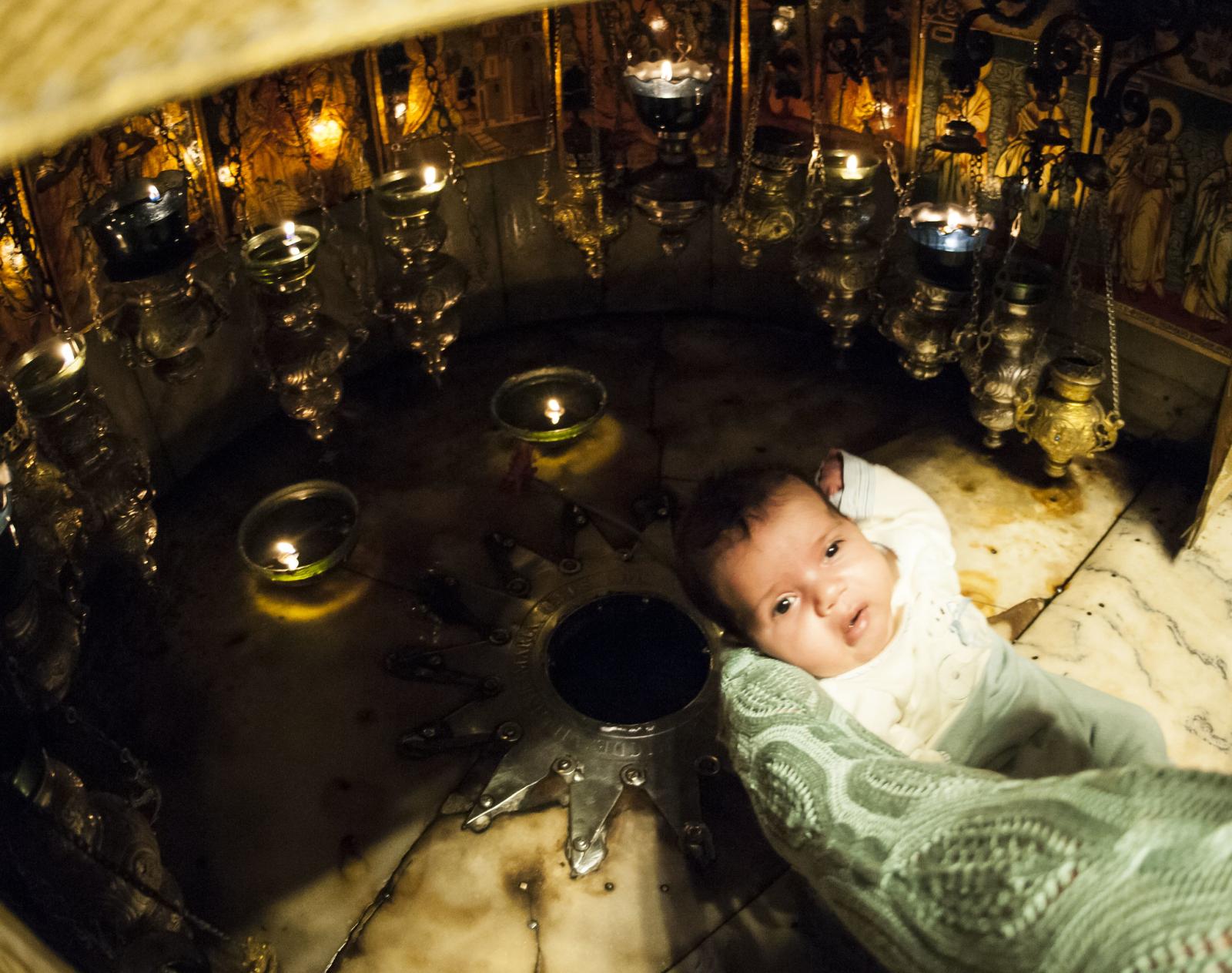A Christmas homily by Bishop John Sherrington
O come let us adore him, O come let us adore him, O come let us adore him, Christ the Lord.
These words immediately remind us of the favourite carol Adeste fidelis, O Come All Ye Faithful. This ancient carol is one of the first we learn as children and only later begin to grasp the profundity of the words and its message.
In the first verse, we are summoned to Bethlehem to come and adore the King of Angels. When we reach that sacred place we can only bow down and adore him, bowing down in humility recognising that he is Emmanuel, God is with us in the Child Jesus.
If you visit Bethlehem, when you reach the Church of the Nativity in Manger Square, you will need to stoop, bow your head and walk through a very low doorway. It is designed in this way to prevent horsemen entering who could do damage during warfare and so it protects the congregation gathered in this place of sanctuary where we worship the Christ child. It has a deeper meaning as it reminds us that when we come to the Christ child, we must bow low in humility and worship him, Our Redeemer and Saviour, who gave his life for us on the cross so that we might share his glory.

The star marking the place where the manger was laid is under an altar and so you will need to bow down even lower and kneel on the floor to kiss this sacred rock. O come let us adore him, Christ the Lord.
We come to the crib to peer into the manger, like the shepherds and see the baby Jesus, Mary his mother and Joseph. His resting place is a feeding trough, a crib for a poor person. Mary and Joseph are delighted to find a place to rest their weary bones, always a challenge for those who are poor. Blessed is the Holy Family.
 The first outsiders to hear the good news of this birth are the shepherds who have been caring for their flocks on the hillside. Shepherds did not have a good reputation in Israel. They were amongst the lowest-esteemed labourers and often well-known for their roguish behaviour. Living from day-to-day, hand to mouth, they eked out an existence so that they look after their flocks. They are considered part of the lowest of society, the anawim, to whom the new King of Israel promises a new life.
The first outsiders to hear the good news of this birth are the shepherds who have been caring for their flocks on the hillside. Shepherds did not have a good reputation in Israel. They were amongst the lowest-esteemed labourers and often well-known for their roguish behaviour. Living from day-to-day, hand to mouth, they eked out an existence so that they look after their flocks. They are considered part of the lowest of society, the anawim, to whom the new King of Israel promises a new life.
At the beginning of Jesus’ public ministry, in the words of the Beatitudes, he teaches, ‘blessed are you who are poor, for yours is the Kingdom of God; blessed are you who are hungry now, for you shall be satisfied; blessed are you who weep now for you shall laugh; blessed are you when people hate you and when they exclude you and revile you and spurn your name as evil, on account of the Son of Man! Rejoice in that day and leap for joy. The shepherds, later the Magi, and all people who receive the message of Jesus, are promised a new and eternal life which is shared with him. We are those people, the beloved of God.
We worship this child who is God made man because he is for us the fullness of God’s plan of redemption; ‘God of God, light of light, Very God, begotten, not created.’ He is the light who has come into the world, ‘a light to enlighten all peoples and give glory to our Saviour Jesus Christ. In the tender compassion of our God, the dawn from on high shall break upon us, to shine on those who dwell in darkness and the shadow of death and to guide our feet on the road of peace.’ In this simple scene, we see the working out of God’s plan. The angels sing of the glory of God and the proclamation of peace.
This night many people are yearning to know again the ‘road of peace’. We think of the families parted and broken apart because of the war in Ukraine, those struggling to find heat and light in the bombed cities of that country, the Russian mothers who grieve for their sons. We think of those people who are struggling and living with fear created by insecurity, sickness, grief, or broken relationships. With them, we seek to find again the road of peace which can only be fulfilled by Christ the Prince of peace. He comes to us, most closely and deeply, in the Bread of Life. We receive the one who was laid in the manger, the feeding trough, who gives us life.
How do we come to adore him? The final words of the carol In the bleak midwinter provide an answer,
What can I give him?
Poor as I am
If I were a shepherd
I would give a lamb
If I were a wise man
I would do my part
But what I can I give him
Give him my heart
Give him my heart
We come and adore him, Christ the Lord, by giving our heart to him.
Photo: Main image and Shepherds' Fields by Bishop John Sherrington; Star making the place of the Nativity by Mazur/CBCEW.org.uk
